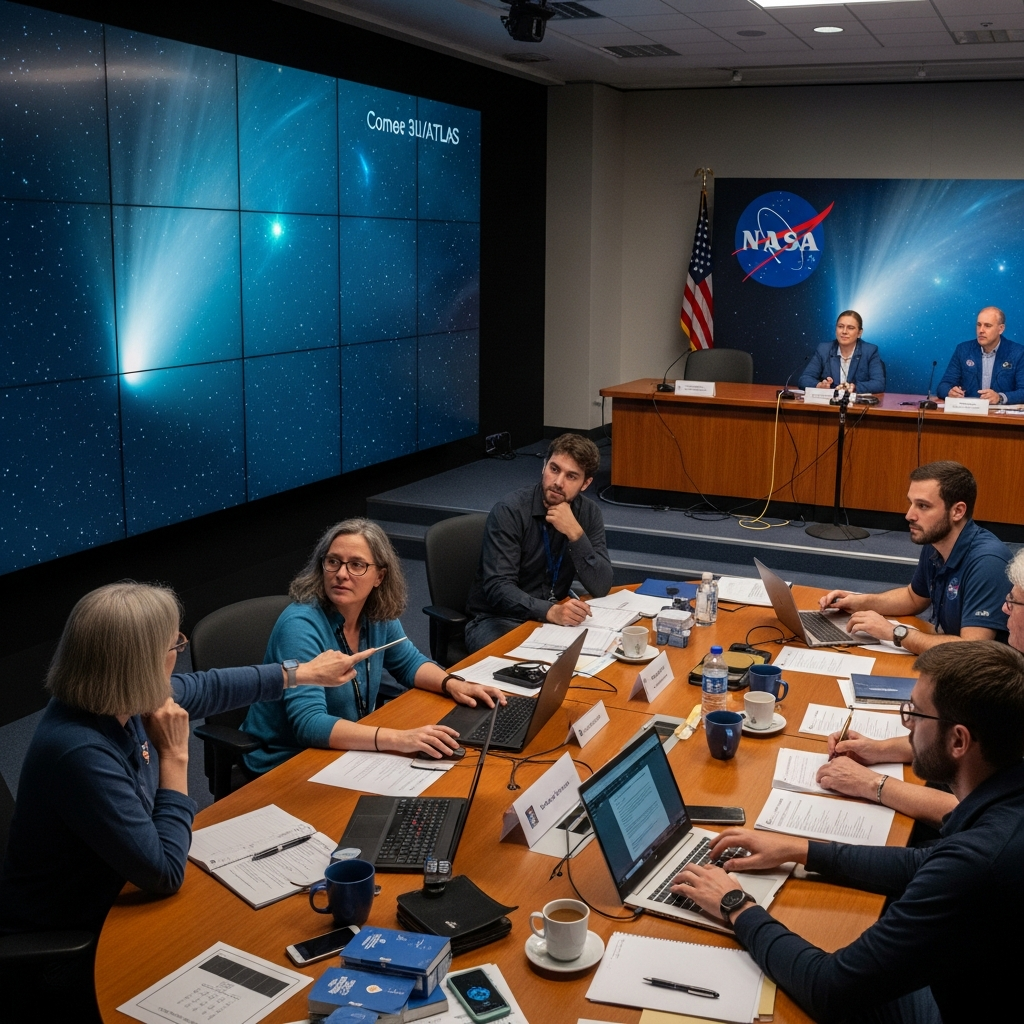Get ready for a cosmic reveal! On June 23, the astronomical world is poised for a major milestone: the release of the first public images from the Vera C. Rubin Observatory. This highly anticipated event is being compared to the initial stunning views shared by the James Webb Space Telescope in 2022, signaling the dawn of a new era in how we study the universe.
Located high in the dry, clear air of Chile’s Andes Mountains, the Rubin Observatory is a joint project of the National Science Foundation and the U.S. Department of Energy. It’s named in honor of pioneering astronomer Vera Rubin, whose work on galaxy rotation curves provided crucial early evidence for the existence of dark matter. The observatory’s primary mission is ambitious: the 10-year Legacy Survey of Space and Time (LSST), designed to create the most comprehensive dynamic map of the southern night sky ever assembled.
Unprecedented View: Wide, Deep, and Dynamic
What makes Rubin, and specifically the LSST, so revolutionary? It combines raw power with a unique observing strategy. At its core sits an 8.4-meter telescope paired with the world’s largest digital camera – a staggering 3.2-gigapixel (3200 megapixel) instrument the size of a small car, cooled to a frigid -100°C to minimize noise.
The telescope features an innovative three-mirror design that provides an exceptionally wide field of view, capturing an area equivalent to about 40 full moons simultaneously. Unlike traditional astronomical surveys that typically have to compromise between covering a large area (wide) or seeing faint, distant objects (deep) – often described as the “wedding cake strategy” – Rubin is engineered to achieve both unparalleled depth and area coverage at the same time.
But its most groundbreaking feature is its speed and repetition. The nimble telescope can slew to a new target in just five seconds, allowing it to scan the entire southern sky every few nights. Over 10 years, this will build a dynamic, four-dimensional view of the universe, showing how everything from nearby asteroids to distant galaxies changes over time.
Why Rubin’s First Light Matters: Unlocking Cosmic Mysteries
The images unveiled on June 23 are just the beginning of a decade-long quest poised to transform nearly every area of astronomy. This project has been called the “most comprehensive data-gathering mission in the history of astronomy” and has ambitious goals.
The Enigmatic Dark Universe: A primary target is shedding light on dark energy and dark matter, which together constitute about 85% of the universe’s total matter-energy content but remain invisible. Rubin will measure the shapes and properties of billions of galaxies – an order of magnitude jump from current surveys. This will provide unprecedented data to map the cosmic web (dominated by dark matter) and study the universe’s expansion history (driven by dark energy). Rubin will also use gravitational lensing to map dark matter distribution and test its fundamental properties, exploring even exotic models. Scientists are particularly keen to see if Rubin confirms intriguing hints from other experiments suggesting dark energy might be weakening over time, a finding that could require rewriting our standard cosmological models.
Charting Our Galaxy and Beyond: Beyond the large-scale structure, Rubin will map our own Milky Way and its neighbors with incredible detail. Its depth and infrared capabilities are expected to reveal vast numbers of faint objects previously missed, such as low-mass stars and brown dwarfs (“failed stars”), potentially boosting our catalog of brown dwarfs in the Milky Way by twenty times and helping us understand the boundary between star and non-star formation. The survey will also study the faint glow of “intracluster light” from stars drifting between galaxies, shedding light on how giant galaxy clusters form.
A Universe in Motion: Rubin’s ability to survey the sky every few nights is crucial for discovering and tracking transient and variable events – things that change or move. This includes everything from exploding stars like supernovae (potentially discovering thousands each night) to identifying the electromagnetic counterparts of powerful gravitational wave and neutrino events. It will also create a comprehensive inventory of our solar system, tracking asteroids and comets, including those that could pose a hazard to Earth. The sheer volume of changes detected nightly requires rapid response; information about these events will be distributed within 60 seconds, relying heavily on advanced automation and AI/machine learning algorithms – a true revolution in how astronomy is done.
Inventory of the Solar System: The LSST will create a detailed census of objects within our own solar system, potentially aiding the search for undiscovered planets in the outer reaches, like the hypothesized “Planet Nine.”
Navigating the Data Deluge
The scope of the LSST generates a truly staggering amount of data – an estimated 20 terabytes every single day, totaling around 60 petabytes of raw image data over 10 years. Managing this “data tsunami” is a major challenge requiring cutting-edge data science, including advanced algorithms to sift through millions of changes nightly and identify the most scientifically interesting observations. Because the volume is too immense for scientists worldwide to download, they will upload their analysis code to LSST computing platforms for remote processing. This monumental undertaking is a highly collaborative global effort, involving over 2,000 scientists across eight major science teams, ensuring the data’s maximum scientific return. Once processed, the data will be publicly available in the US and Chile, providing a rich mine for decades of future research.
Join the Cosmic Reveal
For the public, the release of these first images on June 23 (scheduled for 15:00 UTC / 11:00 EDT) offers a chance to witness a new era unfold. Scientists working with Rubin are already hinting at the sheer scale, noting that appreciating the full detail of just one image would require a display equivalent to 400 ultra-HD TVs! While the images will be available online, experiencing their full, breathtaking scope is best done on large displays. This is why watch parties are being hosted globally by partner institutions like museums and universities – offering a chance to see the vastness of Rubin’s field of view and then zoom in on distant galaxies, or view timelapse videos of the changing sky, sharing the excitement with fellow space enthusiasts via livestream.
The Future is Bright (and Full of Dark Energy)
The Vera C. Rubin Observatory is more than a telescope; it’s truly a “discovery machine.” While it’s designed to tackle some of the biggest questions in astronomy, from the nature of dark energy and dark matter to creating an inventory of hazardous asteroids, perhaps the most thrilling prospect is what we don’t know it will find. The observatory is poised to reveal entirely new phenomena and raise questions we haven’t even imagined yet. Carrying forward the legacy of Vera Rubin, this groundbreaking observatory promises to show us the universe in a way we’ve never seen before, ensuring the future of astronomy is incredibly bright – and full of unexpected wonders.




